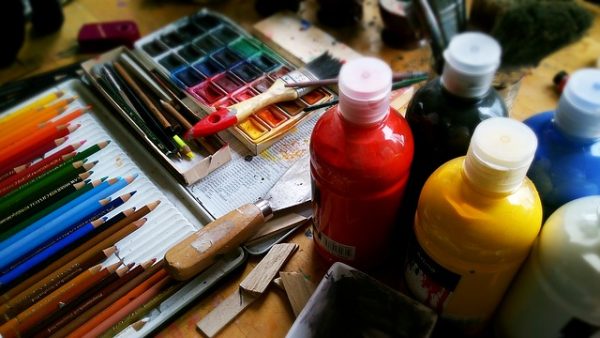A long-term, promising career as an artist includes three components: some business planning, a lot of marketing, and, most importantly, the ability to create work that people connect with. Whether you want to establish a career as an artist or just want to make enough money to maintain your hobby, the internet has made it easy for creative people to achieve their goals.

Artists who have made a living selling art online understand that running a business entails more than just creating art and publishing it on social media. In today’s world, the art industry is among the most competitive. You have to be patient because most art businesses are rarely overnight success stories. You have to work hard to create a big enough ripple in the art world to get recognition.
It is not difficult to start a business. Making it a success, on the other hand, is a much more difficult task. In this article, we will discuss some helpful tips for starting and growing your art business.
1. Pick a Name for Your Business
What’s in a name? You may ask. Well, everything. Think of all the great artists, studios, and art galleries; what do they have in common? A name that represents their brand and work. Havin a good name increases the chances of your company being discovered by potential clients.
The right name improves your company’s chances of getting noticed by prospective customers. Modifying your name several times throughout your career might severely limit your artist’s commercial viability. Long-time fans may no longer recognize you, collectors may be unable to locate you, and you may lose your carefully cultivated reputation. Make sure you’ve considered everything.
There are numerous strategies you can utilize to come up with a name for your art business. You can use your actual name, your initials (or a tweaked version of them), come up with one off the top of your head, or use an artist name generator. The latter is an excellent choice as it can be hard to come up with a creative name on your own. Using an artist name generator can give you some good ideas.
2. Learn the Art Market
What’s hot, what’s not? The world of art is highly dynamic. There is always a paradigm shift taking place in some part of the world. So before you delve into the industry, make sure you familiarise yourself with the local and international art market.
It’s never a good idea to jump into a business without first doing some research on competitors. That’s why you should always look into your competitors. Find out where similar works are being sold and how much they cost. Examine their work in their studios or shows. Find out where your type of artwork is in high demand. Also, research market prices to see whether you would benefit or not.
3. Know Your Audience
You should be aware of your target audience as an artist. Consider the following questions:
- Who is most likely to buy my work?
- What is the age range of my target market?
Answering these questions ensures you know who your ideal customer is and will help you design artwork that is more relevant to them. For instance, if you are into contemporary art, marketing yourself to fans of vintage pieces of the Rembrant era would be useless and unprofitable. They may appreciate your work as lovers of art but will probably not be taking one home.
4. Create an Online Presence
Have a website developed to reach online consumers. Statistics reveal that a large number of people prefer to shop over the internet. Thus, having an online presence is one way of capitalizing on this trend.
A blog is a great way to connect with your audience. On your website, you can post notices of special discounts, upcoming events, and free giveaways. Having a comment section allows your customers to interact with you. And if you’ll be selling your work online, ensure your website is in-built with the latest payment methods and safe POS (point of sale) software.
5. Promote Your Artwork
You can’t expect buyers to discover your art on their own. It would be best if you put the word out. If you’re online-based, creating an online marketing campaign would be pretty beneficial. The same also applies if you have both an online presence and a physical location.
Social media is an excellent and cost-effective tool to market and showcase your art. Regular updates on social media channels such as Instagram and Facebook will attract attention. And don’t forget to optimize your web pages so you can reach a larger target audience. There are several SEO strategies you can use, such as backlinks and use of keywords. Referrals and word of mouth will considerably reduce your requirement for complicated marketing techniques once you’ve established a following.
Learning how to draw dragon has never been more accessible. With a plethora of online tutorials, courses, and communities, you have all the resources at your fingertips to hone your skills and develop your artistic style. All it takes is a commitment to practice, perseverance, and a willingness to learn from both successes and mistakes. Now that you have the foundation to embark on your artistic journey, it’s time to pick up your pencil and start creating. Whether you’re sketching for pleasure or considering turning your passion into a business, the possibilities are endless.
Final Take
It’s never been easier to start an art business. You have access to all of the necessary tools and resources to start and grow. All you need is a little dedication, effort, and time. Now that you know how to establish an online art business, it’s time to get started.
 Gearfuse Technology, Science, Culture & More
Gearfuse Technology, Science, Culture & More


